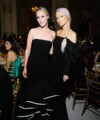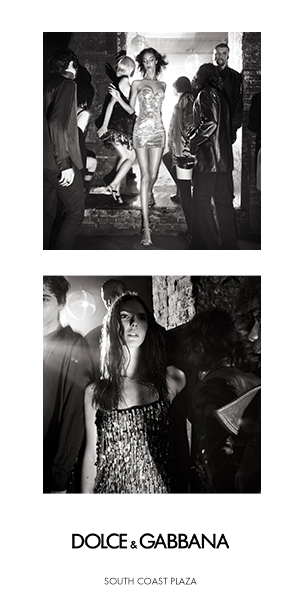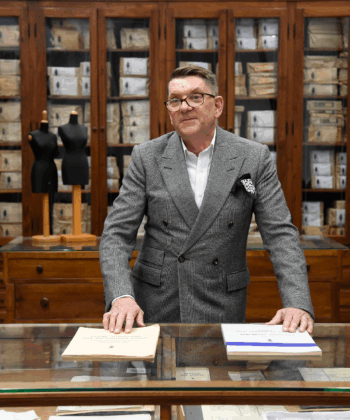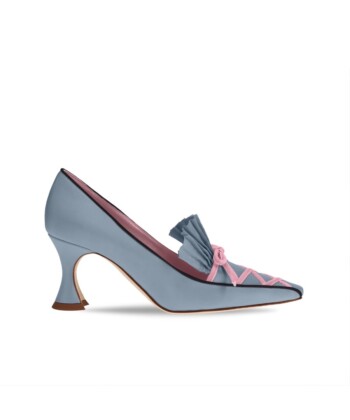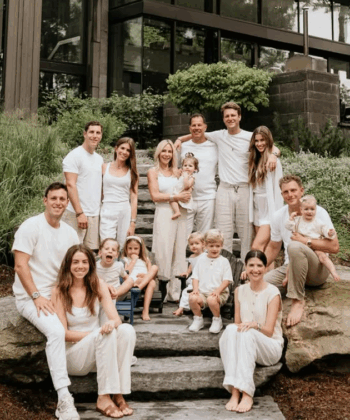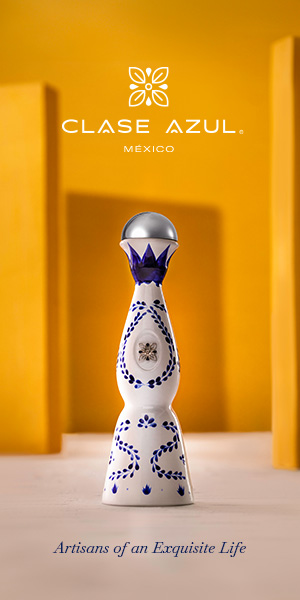Nicola Maramotti spends her fair share of time in New York, but it’s not always about taking meetings and planning strategies.
Take her trip in late October. The director of European retail development of Max Mara—which comprises more than 20 brands, including the namesake label, Sportmax, and Marina Rinaldi—flew over from Italy to accept Fashion Group International’s Brand Heritage Award on behalf of her family. (Maramotti is the wife of Ignazio Maramotti, whose father Achille Maramotti founded the clothing company in 1951 in the northern Italian city of Reggio Emilia.) Understandably, Maramotti is seen by many as the key to the multibillion dollar private company’s future. Not only does the German-born, American-educated exec boast movie star looks—she’s perfectly slim and statuesque, with bronzed skin and not-too-icy blonde hair—but she has the work ethic to match, spending the last 20 years developing that stable of brands, starting out on Max & Co., the more affordable label, and now focusing on its crown jewel, Max Mara. Oh, and she’s the mother of four teenage children—one boy and three girls.
DuJour sat down with Maramotti at Max Mara’s newly renovated New York offices to discuss China’s luxury boom (and potential bust), the influence of bloggers on her brands, and the not-so-secret secret to great skin.
DuJour: The showroom looks great. I love the wood paneling.
Nicola Maramotti: It’s from the Argentinean football stadiums. They can’t do use it anymore, because it can burn.
How did you find it?
We researched wood—we asked a specialist and he had this idea. This crazy idea. When we saw it, we were so enthusiastic, we said, ‘let’s buy it all.’ So we bought all the wood of all the Argentinean stadiums. We just inserted the platinum, so it’s a little more…
Slick….
Slicker…elegant.
I want it for my house.
Probably because it gives you the feeling of warmth, luxury, feeling cozy.
Which is kind of the definition of the Max Mara brand.
I think we’ve got quite close to it.
So what are you doing here in New York?
This time, I’m here for the FGI (Fashion Group International) Brand Heritage Award, which is being giving to Max Mara this year. It’s not given every year, so we are very proud to receive it. I think that FGI is quite an important organization. They promote fashion, and the importance of fashion, young designers, educational programs.
How do you use your heritage to inform the new collections?
I think the detail is what makes us quite famous. The love for the details, the love for the materials of the coat…for the pleats that Sportmax is doing, or the stitching that Max Mara is doing. There’s always something new that you can discover. But they are always modern. Even the ones you already have in your wardrobe, they’re still modern.
What is the one silhouette that customers come back to again and again?
They love the wrap coat, because it’s just something they know Max Mara for. But customers, nowadays, they say…. The other day a friend of mine said, “I would always buy my coats at Max Mara,” not because she knows me but because she takes the best from everybody. For her, the coats and our dresses and our suits are the best. And we are absolutely known for our coats because it was the first garment my father-in-law started with in 1951. One coat and one suit. It was a camel coat, which became 23 collections, over 100 countries.
Twenty-three collections? That’s incredible.
It’s a big evolution.
You have a huge presence in China, and you continue to expand in China as a lot of other luxury brands scale back. What do you think it is about Max Mara that resonates with the Chinese consumer in the way that some of your competitors don’t?
I don’t know why others are slowing down, but China is a huge growth area for us…China loves luxury products from Italy.

And you still make most of your products in Italy?
We do. Max Mara is done—a lot of it is done in Italy. The coats, the dresses, the Elegante collection—almost everything you see in the stores (left, runway looks from the spring/summer 2013 show). But we have quality control all over the world, so there’s no problem about quality even if we do something abroad as well. I think that the Chinese customer, the American customer, the French customer, or the German customer…they all look for something that’s quite similar today. Globalization and the internet made fashion so available and so easy to look at all over the world. You see the fashion shows in the same moment whether they’re happening in Milan or in Paris in New York. Women who are really following fashion, they know what’s going on. And they all want the same. It’s not—there are small women and tall women in China as there are in other countries, so there’s no difference of fit. They just adore our product. And we have been expanding on a very high scale in China, we have done huge stores—and we were one of the first to go to China and believe in China.
You embody the brand so wholly—yet you’re German, you’ve spent a lot of time in the States (first as a high school student, and then as a manager at Wempe Jewelers). And now, of course you live in Italy. How has each place influenced your style? And how has your international style influenced Max Mara?
It has especially influenced [my own style], because I have opened up completely. I have no borders. I think European as I think worldwide, which is good because it gives you an easy approach to strategy. In Italy it is quite a traditional country, they appreciate having someone who wakes them up a little bit. When I go around in Europe, I want to speak to my customers. I go on the sales floor, I work directly with the staff. I want to see the women who are trying on our product and our garments. I want to see if the fit is good, what they say and what they feel and if they feel self confident when they get out of the dressing room.
But the brand is still very Italian.
No one can accessorize like the Italians can, to make something very simple look very chic, like a white blouse. They just have this special feeling, how to pull up a sleeve, how to bring out the color of a blouse, to put on the right necklace or the right scarf. Even how they hold the bag. The history, the feeling for beauty and for elegance. Simple elegance. Classical elegance.
You seem to be spreading the gospel of Max Mara.
I try to do that! But I also like to really work on the playground. I think you have to be true to yourself and be true to what you’re doing. You can’t just be an ambassador in Los Angeles and walk on the red carpet if you don’t what you’re talking about. I wouldn’t do that if I wasn’t also working seriously. I love to work, I just think it’s so…it gives you so much energy and passion. It’s nice to have a philosophy and teach other people about your philosophy.
 Speaking of Los Angeles, the company promotes the careers of up-and-coming actresses through the Women in Film Max Mara Face of the Future Award. I’m always so interested in the women that you choose, from Elizabeth Banks to Chloe Moretz. They’re all very cool and stylish, but they’re also all very—
Speaking of Los Angeles, the company promotes the careers of up-and-coming actresses through the Women in Film Max Mara Face of the Future Award. I’m always so interested in the women that you choose, from Elizabeth Banks to Chloe Moretz. They’re all very cool and stylish, but they’re also all very—
Different?
Yes, they’re all very different. What’s the thought process behind choosing the recipient?
I have been quite interested in them being different, because I don’t think you need a stereotype of a woman. What I like, again, is as we dress women all over the world, we dress different mentalities, styles. When we dressed Chloe (right, at the Women in Film Crystal + Lucy Awards in 2012), we wanted her to be Chloe, we didn’t want her to be a “Max Mara girl.” Same thing with Zoe [Saldana] and Katie [Holmes] and actually, I must say that I have a great relationship with them. Some of them are still friends, I mean, they just invite you home…like Katie Holmes did…just with their family. They like to have a personal relationship with you..and I like that too…it’s not only going there and saying, “Okay, I’m here, I give you the prize, and now I go home.” It’s seeing them again every year, calling them up and seeing how they are. They might become fans of what we have and they might wear it. Sometimes they’re photographed wearing it, sometimes not.
I could see you connecting with these actresses because they’re strong women who, like you, are very focused on their careers. You’re a female executive in an industry where men are still mostly running things.
Eighty percent of our company is women, lots of executives. When I had my third daughter, my father-in-law said, “Great! We need women in our company!” But you are completely right. Women don’t fill enough executive roles. And that’s very often because they—let’s be honest—have two roles if they want to have a family. You can’t do the two perfectly. I think between 40 and 50 and 50 and 60 can be the best years, because you are more self confident and you’ve [raised your kids]. And you can really live for your work, do what you’ve always wanted to do because you have a bit more time.
A few years back, the photographer Garance Dore blogged about her camel Max Mara coat. She wore it all the time, and it became this “thing” on the internet. I wanted that coat so badly. I feel like everyone was talking about Max Mara that season in particular. How important is the web as a platform? And e-commerce?
It has become much more of a focus in the past two years even, because everyone became to notice the importance, and the influence it has on the younger generation. They’re only on the internet. I see it with my children—they are informed about everything, there’s such a quick communication. The bloggers are becoming almost more important than an important fashion journal. It’s something we cannot close our eyes about. Even though I think we should still honor who has culture about fashion—do you understand what I mean? I think we all need knowledge in order to give our opinion.
When Garance started wearing Max Mara, did you see interest in those particular coats increase?
A lot. Whenever important bloggers talk about us—or whenever actresses are photographed wearing our coats—the more natural it is, the more people talk about it.
 Your family invests a tremendous amount of money in art.
Your family invests a tremendous amount of money in art.
I think that the real work was done by my father-in-law, because he began collecting when he was 21-years-old. [He passed away in 2005.] What he left us, it was so enormous that we created 43 rooms of contemporary art (left, an interior view of the Collezione Maramotti; below, right, a view of one of the exhibition rooms at the Collezione Maramotti with artworks by Enzo Cucchi and Mimmo Paladino). It’s one of the most important collections you can find in Italy. So you really understand that he was always looking ahead, he was never looking back. We try to keep that philosophy, so actually, after we installed this collection—it’s not the whole collection, just half—we decided to help young artists to get more important without commercializing it. It’s nothing we connect with the fashion industry, because we believe in doing it for the artists. We give young artists the chance to produce works for us, we buy them, and then we put them in temporary exhibitions. Then they stay with the [permanent] collection. The last one—it’s still on—was with a Brooklyn artist Jules de Balincourt. He’s a very hot and upcoming artist—he’s doing paintings—and actually I like them a lot. He has a lot of energy, he’s young. And a good artist. He’s French, but he’s painting in New York.
You said that you’re always looking ahead. What is next for Max Mara, and for you?
As a company, I think, we always want to have new ideas and new projects, so we keep the world excited. And we have more stories to tell. You have to work on the product, of course. And new collections, maybe, which has always been our strength. When we saw women had different needs, we tried to satisfy those needs.
 Would you ever consider doing something very mass?
Would you ever consider doing something very mass?
We have never done it because then we don’t really stick to our quality expectations. We have the Max & Co. brand that I think is a great price point. You have evening dresses for $120—that’s not so much. I did some shopping yesterday to see the brands that are more…Zara, H&M, Hollister, Gap…to see what they’re doing. I feel like their prices are higher than in the past. But they’re not giving you more for the higher price. So I was quite proud of our product. All of our brands are beautiful, you can wear them for more than a season. Quality-wise, you just don’t feel cheap. You feel like you still have style. I think we’re in a niche there. I believe that it nice to have many pieces in the season, but on the other hand, you could have three less, and have the right pieces that you feel good in.
I have to mention. You have such great skin. What do you use?
I don’t know! I don’t use anything in particular. Actually, I use whatever cream I can find that I like. My father has great skin, as my mother as well, so it might be natural. Maybe it’s the carrot juice I drink every morning.















